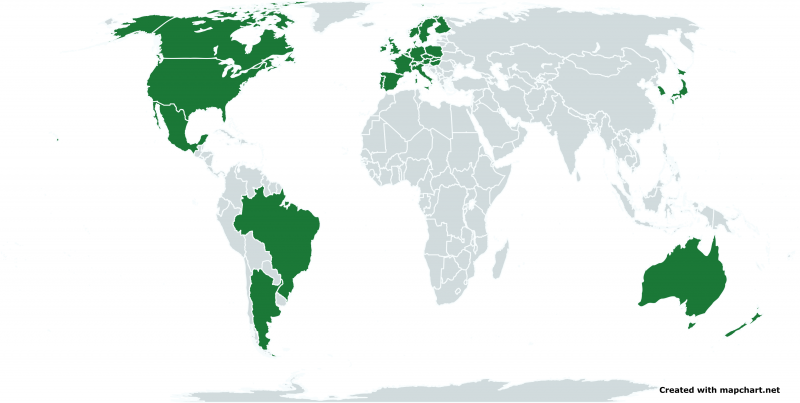Tomb Raider is a media franchise centered on Lara Croft, a British archaeologist who explores ancient tombs and dangerous locations worldwide in search of artifacts. Originating as a video game series by Core Design, the franchise has expanded into films, comics, and novels. Gameplay typically involves exploration, puzzle-solving, navigating traps, and combat. Ownership has shifted from Eidos Interactive to Square Enix and currently resides with CDE Entertainment after Embracer Group's acquisition. The franchise's enduring popularity stems from its adventurous themes and iconic protagonist.
1986: Aliens set action film record
In 1986, the film Aliens set a record for the biggest opening weekend for an action film with a female lead, which stood until the Tomb Raider film adaptation in 2001.
1989: Inspiration from Prince of Persia
In 1989, the gameplay of Tomb Raider was intended to evoke that of the 1989 video game Prince of Persia.
1994: Development of the First Tomb Raider Game
In 1994, development began on the first Tomb Raider video game.
1994: Tomb Raider concept origin
In 1994, the concept for Tomb Raider originated at Core Design. Toby Gard was largely responsible for creating Lara Croft, initially envisioned as a man. The character's gender was changed due to concerns about similarities to Indiana Jones.
1996: Release of the First Tomb Raider Game
In 1996, Tomb Raider, the first entry in the series, was released for personal computers (PC), PlayStation, and Sega Saturn consoles.
1996: Lara Croft featured on the cover of The Face
In 1996, after her debut, Lara Croft was featured on the front cover of British culture magazine The Face, marking a significant cultural impact.
1996: Lara Croft and Tomb Raider's Initial Appearance
In 1996, the character of Lara Croft and the concepts behind the Tomb Raider franchise began to evolve thematically and in popularity with the first game's release.
1997: Pioneering status cited by Electronic Gaming Monthly
In 1997, Electronic Gaming Monthly's Crispin Boyer cited the Tomb Raider series as a pioneer in the medium, laying the foundations for action-adventure and platforming games.
1997: Release of Tomb Raider on Saturn and Playstation in Japan; Launch of Tomb Raider II
In 1997, The Saturn and PlayStation versions of Tomb Raider were released in Japan. Also in 1997, Tomb Raider II launched for Microsoft Windows and PlayStation.
1997: Gard leaves Core Design
In 1997, Toby Gard, co-creator of Tomb Raider, left Core Design alongside Paul Douglas due to disappointment with the marketing use of Lara Croft's sex appeal. They founded their own gaming company, Confounding Factor.
1997: Revised Plans after Tomb Raider II
In 1997, plans for the Tomb Raider franchise were heavily revised after the release of Tomb Raider II. An expansion disk entitled The Further Adventures of Lara Croft was planned but later scrapped.
1998: Tomb Raider III announced
In 1998, Eidos announced that Tomb Raider III would be released as a 1998 title for the original PlayStation, which had not been communicated to the original development team. This decision led to the original team withdrawing from the PlayStation 2 project and the cancellation of the project.
1998: Release of Tomb Raider III; Japan Release of Tomb Raider II on Playstation
In 1998, Tomb Raider III launched. Also in 1998, the PlayStation version of Tomb Raider II was released in Japan.
1999: Release of Tomb Raider: The Last Revelation
In 1999, Tomb Raider: The Last Revelation, the fourth consecutive title in the series, was released.
1999: Tomb Raider comic book success
In 1999, the first Tomb Raider comic book issue was the best-selling comic book of the year.
2000: PlayStation Console Exclusivity Deal Ends
In 2000, Eidos' deal with Sony Computer Entertainment ended, which had kept the console version of Tomb Raider II and future games exclusive to PlayStation.
2000: Release of Tomb Raider on Game Boy Color
In 2000, a side-scrolling Tomb Raider game was released on Game Boy Color.
2000: Release of Tomb Raider: The Last Revelation and Tomb Raider: Chronicles on Dreamcast
In 2000, with the end of the PlayStation exclusivity deal, Tomb Raider: The Last Revelation was released on the Dreamcast. Also in 2000, Tomb Raider: Chronicles released on the same platforms as The Last Revelation.
2001: Release of Tomb Raider: Curse of the Sword on Game Boy Color
In 2001, Tomb Raider: Curse of the Sword, a sequel to the first Game Boy Color title, was released.
2001: Tomb Raider film adaptation release and success
In 2001, the Tomb Raider film adaptation grossed $275 million, becoming the highest-grossing video game adaptation at the time.
2001: Franchise Name Change
In 2001, the Tomb Raider franchise was known as Lara Croft: Tomb Raider.
2001: Additional Developers Contribute
Since 2001, other developers have contributed to ports of mainline Tomb Raider games or with the development of spin-off titles.
2002: Revenue milestone
By 2002, the entire Tomb Raider franchise had generated close to $1.2 billion in revenue.
2002: Release of Tomb Raider: The Prophecy on Game Boy Advance
In 2002, Tomb Raider: The Prophecy was released for Game Boy Advance, developed by Ubi Soft Milan and published by Ubi Soft.
2003: Release of Tomb Raider: The Angel of Darkness
After a three-year gap, Tomb Raider: The Angel of Darkness was released on Microsoft Windows and PlayStation 2 (PS2) in 2003.
2003: Core Design Continues Work After Angel of Darkness
After the release of The Angel of Darkness in 2003, Core Design continued working on the Tomb Raider franchise for another three years, but both projects under development were cancelled.
2003: Crystal Dynamics takes over Tomb Raider production
In 2003, Eidos transferred production of the Tomb Raider series from Core Design to Crystal Dynamics due to the critical backlash against The Angel of Darkness and Core's struggles with PlayStation 2 development. The priority for Crystal Dynamics was to regain the fanbase's trust and reclaim the series' status.
2003: Development Transfer to Crystal Dynamics
In 2003, after a mixed reception to the sixth game, development of the main Tomb Raider series was transferred from Core Design to Crystal Dynamics.
2003: Mobile Game Releases
In 2003, four Tomb Raider titles were released for mobile phones.
2003: Failure of The Angel of Darkness
The failure of The Angel of Darkness in 2003 was attributed to burnout from annual releases.
2005: Development of Tomb Raider: 10th Anniversary
In late 2005, Core Design began development of an updated edition of the first game for the PSP called Tomb Raider: 10th Anniversary, with a projected release date of Christmas 2006.
January 2006: Leaked Build of Tomb Raider: 10th Anniversary
A January 2006 build of Tomb Raider: 10th Anniversary was leaked online in 2020, and remains available on the Internet Archive.
June 2006: Core Design Sold to Rebellion Developments
In June 2006, Core Design was sold to Rebellion Developments, leading Eidos to request the cancellation of Tomb Raider: 10th Anniversary.
2006: Cancellation of Tomb Raider: 10th Anniversary for PSP
In 2006, Eidos cancelled Core Design's nearly finished remake of the original Tomb Raider, entitled 10th Anniversary, for the PlayStation Portable (PSP). Crystal Dynamics was charged with making a remake instead, due to their cross-platform capabilities. This decision led to Core Design's attempt to reskin the title and contributed to the studio's closure years later.
2006: Tomb Raider voted one of Britain's top 10 designs
In 2006, Tomb Raider was voted one of Britain's top 10 designs in the Great British Design Quest organized by the BBC and the Design Museum.
2006: Release of Tomb Raider: Legend
In 2006, Tomb Raider: Legend was released worldwide for various platforms, including Microsoft Windows, PlayStation 2, Xbox, Xbox 360, PlayStation Portable (PSP), GameCube, Game Boy Advance (GBA), and Nintendo DS.
2006: Lara Croft inducted onto the Walk of Game
In 2006, the character of Lara Croft was inducted onto the Walk of Game.
2007: Release of Core Design's Final Title
In 2007, Free Running was ultimately the final title released by Core Design.
2007: Release of Tomb Raider: Anniversary
In 2007, a remake of the first game titled Tomb Raider: Anniversary was released worldwide for Microsoft Windows, PlayStation 2, PlayStation Portable, Xbox 360 and the Wii.
2008: Eurogamer cites series as pioneer
In 2008, Eurogamer's Martyn Carroll cited the Tomb Raider series as a pioneer for popularizing action-adventure and platforming games, bringing video gaming into the cultural mainstream.
2008: Release of Tomb Raider: Underworld
In 2008, Tomb Raider: Underworld was released on Microsoft Windows, PlayStation 3 (PS3), PlayStation 2, Xbox 360, Wii and DS.
2008: End of Lara Croft: Tomb Raider Title
In 2008, the franchise ceased to be known as Lara Croft: Tomb Raider.
2009: Square Enix Europe Acquisition
In 2009, Square Enix acquired Eidos Interactive, then Square Enix Europe, gaining ownership of the Tomb Raider franchise.
2009: Square Enix acquires Eidos
In 2009, Square Enix acquired Eidos, renaming it Square Enix Europe, thus gaining ownership of the Tomb Raider franchise. Crystal Dynamics continued development under the new structure.
2009: Release of Tomb Raider: Underworld in Japan
In 2009, the PlayStation 3, PlayStation 2, Xbox 360 and Wii versions of Tomb Raider: Underworld were released in Japan.
2010: Release of Lara Croft and the Guardian of Light
In 2010, Lara Croft and the Guardian of Light was released as a downloadable title for PC, PS3 and Xbox 360.
2010: Lara Croft earns Guinness World Records recognition
In 2010, Lara Croft earned six awards in the Guinness World Records, including recognition as the "most successful human video game heroine".
2010: Prince of Persia film surpasses Tomb Raider
In 2010, Prince of Persia: The Sands of Time film overtook Tomb Raider (2001) as the highest-grossing video game adaptation.
2010: Lara Croft subseries begins
In 2010, a new subseries began, billed as Lara Croft rather than Tomb Raider, while using the aesthetics of the Legend continuity. The first of these was Lara Croft and the Guardian of Light.
2011: Release of The Tomb Raider Trilogy
In 2011, The Tomb Raider Trilogy was released for PlayStation 3, including Anniversary and Legend remastered in HD, along with Underworld.
2013: Release of Tomb Raider Reboot
In 2013, a reboot of the series, titled Tomb Raider, was released worldwide for Microsoft Windows, PlayStation 3 and Xbox 360.
2013: Foundation engine creation for Tomb Raider reboot
In 2013, an updated version of the Crystal engine called Foundation was created for the Tomb Raider reboot. Motion capture was used for the game.
2013: Tomb Raider reboot sales success
In 2013, the Tomb Raider reboot sold 11 million units, becoming the most commercially successful title in the series to date.
2013: Details of the 2013 Reboot Continuity
In the 2013 Tomb Raider reboot continuity, Lara's mother vanished, her father became obsessed with immortality, and Lara's journey led her to Yamatai and a conflict with savage bandits and the Sun Queen Himiko.
2013: Reference to the 2013 Reboot
The planned island setting for Tomb Raider III would not have resembled the 2013 reboot.
2013: End of Real-Life Models for Promotional Events
Until the reboot in 2013, multiple models and body doubles had portrayed Lara Croft in promotional material.
2014: Lara Croft and the Temple of Osiris release
In 2014, Lara Croft and the Temple of Osiris was released as a part of the Lara Croft subseries.
2014: Release of Lara Croft and the Temple of Osiris
In 2014, Lara Croft and the Temple of Osiris was released for retail and download for PC, PS4 and Xbox One.
2015: Lara Croft mobile games
From 2015, the Lara Croft subseries aimed at the mobile format with Relic Run, and later Lara Croft Go which received critical acclaim.
2015: Release of Lara Croft: Relic Run and Lara Croft GO
In 2015, Lara Croft: Relic Run, an endless runner platformer for mobile devices, was released. Also in 2015, Square Enix Montreal released a platform-puzzler for mobile devices, Lara Croft Go.
2016: Release of Rise of the Tomb Raider on PlayStation 4 and Microsoft Windows
In 2016, versions of Rise of the Tomb Raider for the PlayStation 4 and Microsoft Windows were released.
2018: Shadow of the Tomb Raider release
In 2018, Shadow of the Tomb Raider was released as the last main series title to use a proprietary engine, with the franchise moving to Unreal Engine 5.
2018: Release of Shadow of the Tomb Raider
In 2018, Shadow of the Tomb Raider was released to coincide with the new film "Tomb Raider" starring Alicia Vikander, which took inspiration from the 2013 game. Shadow was developed by Eidos-Montréal with support from Crystal Dynamics and concluded Lara's origin story.
2018: Release of Shadow of the Tomb Raider and Tomb Raider Arcade Game
In 2018, Shadow of the Tomb Raider was released worldwide on PlayStation 4, Xbox One, and Microsoft Windows. Also in 2018, an arcade game based on this incarnation was released by Bandai Namco Amusement in Europe.
November 2019: Definitive Edition release of Shadow of the Tomb Raider
In November 2019, the "Definitive Edition" of Shadow of the Tomb Raider, featuring all 7 DLCs, was released.
2020: Tomb Raider featured on UK postage stamps
In 2020, Tomb Raider featured on a series of UK postage stamps issued by the Royal Mail to celebrate classic UK video games.
2020: Leak of Tomb Raider: 10th Anniversary Build
In 2020, a January 2006 build of Tomb Raider: 10th Anniversary was leaked online and made available on the Internet Archive.
2021: Tomb Raider series sales milestone
As of 2021, the Tomb Raider series has sold over 85 million units worldwide.
2021: Tomb Raider anime series announcement
In 2021, Legendary Television and DJ2 Entertainment announced an anime series for Netflix set after the events of Shadow of the Tomb Raider, entitled Tomb Raider: The Legend of Lara Croft.
2021: Details Revealed in "The Making of Tomb Raider"
In 2021, details about the franchise's plans following the release of Tomb Raider II were revealed by interviews with former staffers conducted for The Making of Tomb Raider.
May 2022: Embracer Group purchases Square Enix Europe assets
In May 2022, Embracer Group acquired Square Enix Europe assets for $300 million, including Crystal Dynamics and the Tomb Raider franchise.
2022: Embracer Group Purchase
In 2022, Embracer Group purchased the intellectual property of Tomb Raider alongside Eidos.
2022: Release of Tomb Raider Reloaded
In 2022, Tomb Raider Reloaded, an action arcade and free-to-play game, was released by CDE Entertainment for iOS and Android devices.
January 2023: Phoebe Waller-Bridge to Write Tomb Raider TV Show
In January 2023, The Hollywood Reporter announced that Phoebe Waller-Bridge would write a TV show adaptation of the Tomb Raider video game franchise for Amazon, with tie-in video game and film.
January 2023: PowerWash Simulator DLC Release
On January 31, 2023, a Tomb Raider themed downloadable content expansion for PowerWash Simulator was released for free.
2023: The Lara Croft Collection re-release
In 2023, Feral Interactive's Lara Croft spin-offs were re-released as The Lara Croft Collection for Nintendo Switch.
2023: Release of The Lara Croft Collection for Nintendo Switch
In 2023, The Lara Croft Collection was released for Nintendo Switch, containing the games Lara Croft and the Guardian of Light and Lara Croft and the Temple of Osiris.
2023: Tomb Raider Reloaded release
In 2023, the mobile game Tomb Raider Reloaded was published by Square Enix London Mobile.
October 2024: Release of Tomb Raider: The Legend of Lara Croft
In October 2024, Tomb Raider: The Legend of Lara Croft was released.
2024: Sales Figures
By 2024, the Tomb Raider series had sold over 100 million units worldwide.
2024: Release of Tomb Raider I–III Remastered
In 2024, Aspyr released remasters of all six Core Design titles across two collections as Tomb Raider I–III Remastered.
2024: Embracer Group split announcement
In 2024, Embracer Group, due to over-expansion, announced it would split into three companies, with the Tomb Raider IP to be held by Middle-earth Enterprises under Fellowship Entertainment after the separation.
April 2025: Live action series not going ahead
As of April 2025, a live-action Tomb Raider series in development at Amazon is reportedly "not going ahead", with no script written despite significant investment.
2025: Release of Tomb Raider IV–VI Remastered
In 2025, Aspyr released remasters of all six Core Design titles across two collections as Tomb Raider IV–VI Remastered.
Mentioned in this timeline
PlayStation is a video game brand by Sony Interactive Entertainment...
Xbox is a video gaming brand created by Microsoft Gaming...

Nintendo is a Japanese multinational video game company based in...
The Nintendo Switch is a video game console developed by...

Sony is a Japanese multinational conglomerate based in Tokyo Its...

Square Enix Holdings Co Ltd is a Japanese multinational conglomerate...
Trending

26 days ago Michael Douglas's 'Don't Say a Word' Thriller with Brittany Murphy Soars on Netflix Charts.
5 months ago Stocks Rebound Amid Israel-Iran Conflict; Dow, Nasdaq, and S&P 500 Rise.

2 days ago Olivia Munn Suffered Food Poisoning After Eating Sushi in Bathtub, Vomited at Airport

4 months ago Xbox Cloud Gaming's "Stream Your Own Game" Arrives on PC App with New Games.
Family is a fundamental social unit based on kinship or affinity It provides structure safety and predictability for its members...

1 hour ago Thanksgiving Dinner Cost Drops in 2025: Survey Reveals Cheaper Meal.
Popular

XXXTentacion born Jahseh Dwayne Ricardo Onfroy was a controversial yet...

William Franklin Graham III commonly known as Franklin Graham is...

Cristiano Ronaldo often nicknamed CR is a Portuguese professional footballer...

Candace Owens is an American conservative political commentator and author...

Michelle Obama is an American attorney author and former First...

Marjorie Taylor Greene known as MTG is a far-right American...